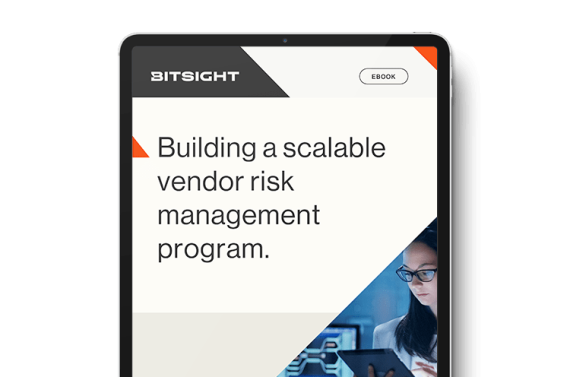Is your business adopting vendors faster than you can address their security issues? Get the keys to scaling your Vendor Risk Management program, from assessment to ongoing monitoring, and proactively mitigate risk in an ever-expanding third-party network.

The more technology your organization adopts, the more exposed it becomes to third-party risks. Consider these statistics:
- 79% of businesses are adopting technologies faster than they can address related security issues.
- 73% of organizations have experienced at least one significant disruption caused by a third-party.
Organizations have responded to these risks by implementing robust third-party risk assessment procedures. However, a common mistake is to view vendor risk management as a one-time activity, typically conducted prior to onboarding a new vendor.
Since third-party risks are constantly evolving, it's crucial to evaluate vendor security at every phase of the vendor lifecycle.
Let’s look at the three distinct phases of your vendor lifecycle management process and steps you can take to assess and remediate vendor risk along the way.
1. Vendor selection and due diligence
Many teams are involved in sourcing new vendors, each with conflicting priorities. For example, the marketing team considers the software solution's features, procurement considers its cost and value, and security and risk management teams consider its security controls. It can be helpful to narrow down vendor selections using documents like RFIs and RFPs.
As soon as you have narrowed down your list of vendors, it's time to start due diligence. Security questionnaires are an important part of this process, but questionnaires offer a single point-in-time view, and vendor responses may be subjective and difficult to verify.
Furthermore, this stage of the vendor lifecycle management process is highly manual, involving one-off spreadsheets to track and compare responses, multiple follow-ups via email, and calendar reminders.
Automated vendor risk assessment capabilities and tools – like Bitsight Vendor Risk Management (VRM) – can solve these problems. Bitsight VRM automates the security assessment process and reduces dependency on email follow-up and other manual workflows. The platform also layers in independent validation of vendor responses using security ratings, so that you can quickly understand a vendor’s true security posture and detect red flags in their responses.
Once you’ve gathered all necessary documentation, you can store it centrally, streamline document sharing across internal stakeholders, and invite your vendors to connect and collaborate for more expeditious risk discovery and remediation – before they enter your supply chain.
2. Contract
Once a vendor is awarded a contract, it’s important to keep a pulse on that vendor’s security performance across the life of the relationship. Typically, this involves conducting periodic security assessments or audits. While these assessments are important, third-party cyber risk can emerge at any time. The answer: continuous monitoring with Bitsight Third-Party Risk Management (TPRM).
Instead of a point-in-time cybersecurity audit, Bitsight TPRM delivers a near real-time snapshot of your third parties’ security performance from onboarding to contract termination.
Using Bitsight TPRM, you can automatically and continuously discover evolving supply chain threats and remediate any security gaps a threat actor may exploit. These can include misconfigured and unpatched systems, open access ports, and even human behavior. Whenever a risk is detected, you are alerted so you can act quickly.
Bitsight can also shine a light on vendors who warrant more periodic in-depth assessments, such as those whose security ratings consistently fall below pre-agreed security thresholds or SLAs.
3. Post-contract
The final step in the vendor lifecycle management program is offboarding. Third-party cyber risk can continue beyond the end of the contract, especially if the vendor had access to your sensitive data, such as a cloud service provider or payroll company.
To mitigate this risk, review the vendor’s contract to determine access levels. Then, take steps to ensure that all access has been severed and all sensitive information erased.
Don’t forget the extended supply chain. Use Bitsight to visualize upstream and downstream dependencies within your vendor relationships. In this way, you can determine if any of your vendors' vendors had access to your data and remove these connections.
Navigate the vendor lifecycle management process – automatically and at scale
Navigating the vendor lifecycle management process can be challenging – especially as your vendor portfolio grows. Traditional methods are highly-manual, time-consuming, and error-prone. They are also hard to scale across the evolving third-party risk landscape.
But with Bitsight’s suite of powerful automated vendor risk management tools, you can confidently manage risk throughout the entire vendor lifecycle.
To learn more, download our ebook: 5 Keys to Building a Scalable Vendor Risk Management Program.
5 Keys to Building a Scalable Vendor Risk Management Program
